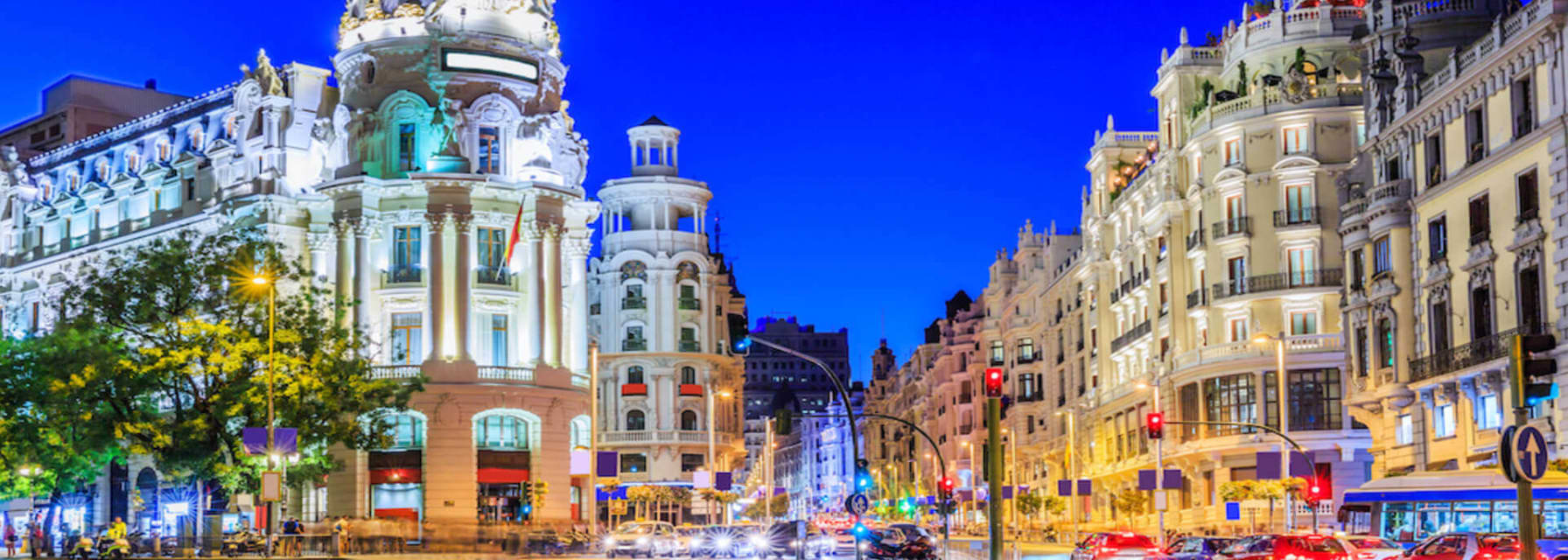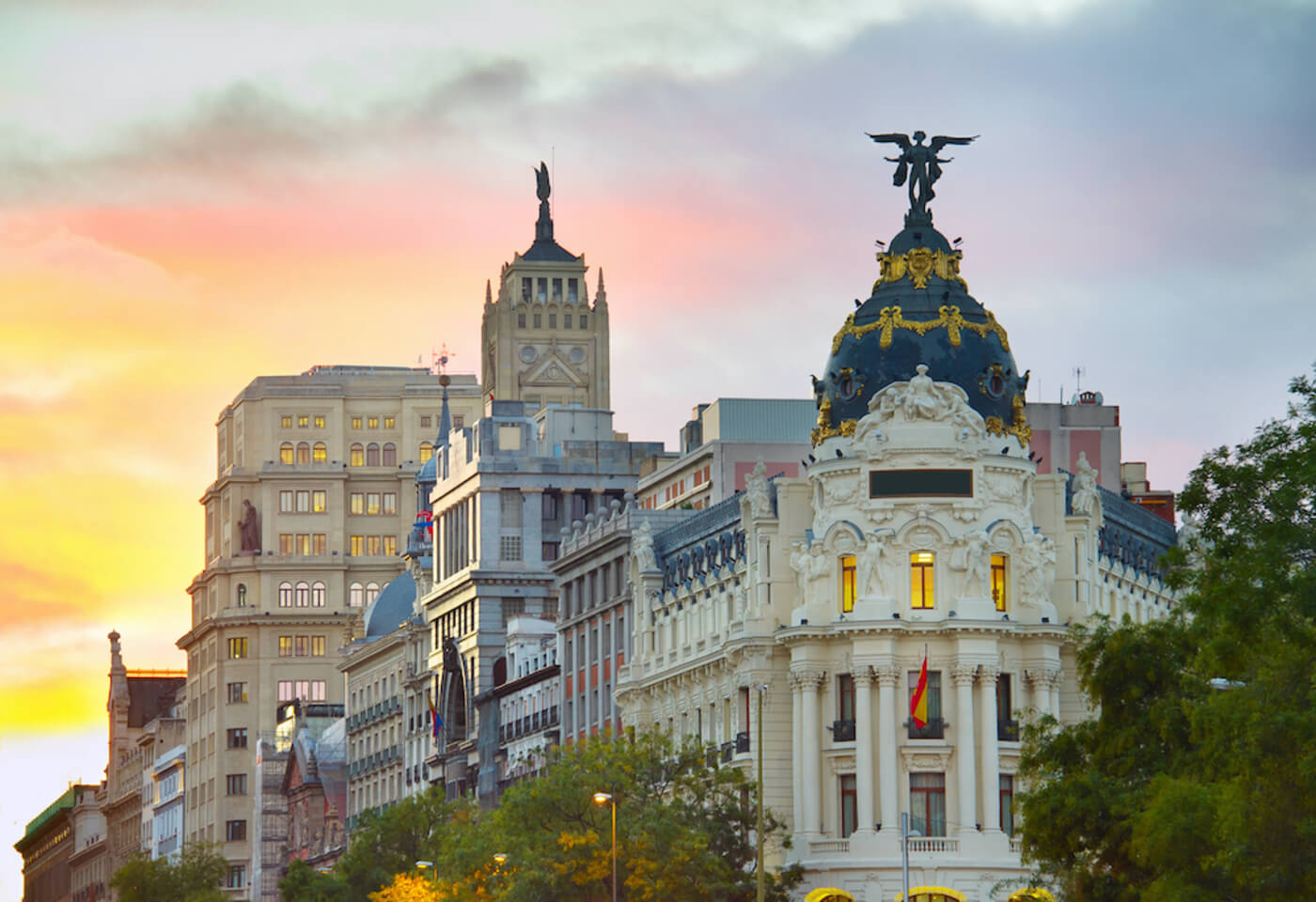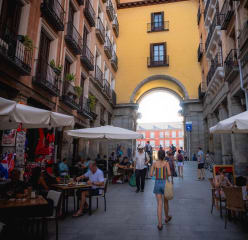A complete expat guide for living in Madrid in 2023
Want to move and live in Madrid? Here’s everything Your need to know about utilities, accommodation, and other details about living in Madrid…

Madrid is one of the world’s most exciting cities, so it’s no wonder that so many people are embracing living in Madrid. With a special culture all its own and world-class museums like the Prado, this city is a popular destination with tourists from all over. Whether you’re traveling to the Spanish capital for pleasure or thinking of relocating to Madrid for some time, you will want to consider issues that crop up for foreigners. We have created a complete expat guide to living in Madrid to help you plan your travels.

What You Should Know About Moving to Spain
Relocating to Spain is relatively straightforward for many European citizens, at least if you live in an EU member country. All in all, moving to Madrid is a little more complicated for non-EU citizens. But it’s still possible to embrace a new life in Spain’s capital – just a little more complicated. Bottom line, with a little bit of research you will be on your way to moving to Spain!
1. Relocating to Madrid as a European citizen
If you are a citizen of one of the 27 European Union countries, you’re in luck! You can simply pick up and move to Spain without a visa. As an EU citizen, you’re entitled to live and work in Spain, though you will need to register with the government after you have stayed for three months.
2. Relocating to Madrid as a non-European citizen
Anyone without a passport from the European Union will need a visa to live in Spain for longer than 90 days. There are a number of different visas and permits that allow foreigners to live in Madrid. Regardless of which type of visa you pursue, you will need to register with the government for a Foreigners’ Identity Number, which is sometimes also referred to as an NIE card in Spain. Many ex-pats and digital nomads apply for work visas in Spain each year. It can take longer than you might think for approval. So be sure to wait to buy plane tickets. Work visa requirements differ depending on the circumstances.
If you already have a job offer from a company in Spain, you can apply for a regular employment visa and residence permit. Your new company should be willing to do most of the application on your behalf.

Even without a job offer, it’s still possible to get a work visa in Spain. If you’re an entrepreneur, you can start a business in Spain and will automatically be granted a renewable one-year work visa. Simply visit the nearest Spanish consulate to apply. Freelancers and digital nomads can apply for self-employment visas and residence permits, called “autonomo”. As with the entrepreneur visa, you must apply in person at a Spanish consulate. You will need to submit a business plan and proof that you can support yourself, and once you are settled you will need to pay monthly fees to maintain your work visa in Spain. Another option is a student visa for Spain. Anyone studying at a college or university within the country is eligible for residence. Of course, in this case, applying to school is the first step!
3. Moving to Spain with family or pets
Madrid is a wonderful place to raise a family, thanks to its excellent quality of life, public parks, and reasonable cost of living. But before you make any grand plans, be sure that your work visa in Spain allows you to bring dependents along. If you have a regular employment visa, you will need to reside in Spain for a year before your family members are eligible for visas themselves. The same holds true if you have a student visa or an “autonomo”.However, anyone who holds an entrepreneur work visa for Spain can bring family members along. Moving to Spain with your pet is easy, as long as you research requirements ahead of time. First, it’s essential that your cat or dog is microchipped before you enter Spain. You will also need a copy of your pet’s health certificate that has been translated into Spanish.
Life in Madrid: Getting to know the city
Madrid is known for its incredible art museums, including the world-renowned Prado Museum – as well as its culinary scene. Also, some of the top places to visit in Spain’s capital are the Basílica de San Francisco El Grande, the Plaza de Toros Las Ventas, and the Museo Thyssen-Bornemisza. When you live in Madrid you have plenty of time to experience its incredible food. Whether you want a casual selection of tapas, sushi, or regional Spanish fare, you will be able to find what you’re looking for! Overall, the city has hundreds of restaurants, from humble street carts to Michelin-starred eateries. There are also plenty of cafes, bars, and pubs where you can relax with friends or make some new acquaintances.
1. Here are some of the best activities you can do in Madrid
Visiting an art museum is essential when you arrive in Madrid. Start with the so-called “Golden Triangle of Art,” the name given to the city’s three most popular art museums, the Prado, the Reina Sofía, and the Thyssen-Bornemisza Museums. Taken together, these institutions will give you firsthand education about art. Another must-do activity for tourists and expats is riding the Teleférico de Madrid, a cable car that offers jaw-dropping views of the city. Travel to Madrid’s Parque de Oeste or Casa de Campo, another wonderful park, to board the cable car. The art of flamenco is unique to Spain, and there are many places in Madrid where you can experience this beautiful dancing style firsthand. The famous Teatro Flamenco is a wonderful place to see flamenco dancing, as is Cardomomo. Finally, no self-respecting expat would miss out on a tapas crawl. So once you have settled in a bit, invite a friend or two for an amazing night out hopping between Madrid’s famous tapas bars.
2. What’s the climate of Madrid?
Before living in Madrid, you should prepare yourself for extremes. The city has a generally dry climate, with hot summers and cold winters. Spring and fall are generally temperate, and January is the coldest month of the year. Madrid does not generally receive a great deal of snowfall. Be sure to pack clothes for all four seasons when moving to Madrid!
3. Limitations of not knowing the local language
Although it is helpful if you can understand and speak Spanish, it’s not necessary for expats to be fluent. It’s entirely possible to move to Madrid even if you don’t speak Spanish at all, as long as you understand that it could cause you some isolation. Many people in Madrid speak English, but it is still a good idea to take some language lessons after you arrive. If that’s outside the budget, you can try an app like Duolingo and invest in a good translation app for your smartphone.

What you should know about finding accommodation in Madrid
Hotels are fine for tourists, but if you’re an expat or digital nomad it’s more cost-effective to rent an apartment in Madrid. Most rentals in Spain come unfurnished, which can be cheaper than renting furnished apartments in Madrid. Keep in mind that most rentals also require you to sign a yearlong lease so be sure that you actually want to stay in Spain for a year or longer before you enter into a binding contract.
In addition, if you rent an unfurnished apartment you will need to buy furniture, appliances, electronics, and more. It may be more practical to choose a furnished apartment as an expat, since that will allow you to travel lighter. There are a number of providers of short-term furnished apartments in Madrid, including Blueground. We have an excellent selection of studios and 1-3 bedroom apartments in Madrid, including in popular neighborhoods like Almagro and Huertas.
Best places to live in Madrid
Exploring Madrid’s vibrant neighborhoods unveils a tapestry of unique experiences, each catering to different lifestyles and preferences. From the bustling energy of Sol to the inclusive spirit of Chueca, the bohemian vibes of Malasaña, the historical charm of La Latina, and the exclusive elegance of Salamanca, there’s a neighborhood to suit every taste. Whether you’re drawn to cultural landmarks, vibrant nightlife, culinary delights, or upscale shopping, Madrid offers a diverse array of living options. Whether for a month, a year, or longer, Madrid beckons with its rich tapestry of experiences, ready to be explored and embraced by all who call it home.
An overview of living costs in Madrid?
1. Housing
The cost of renting in Madrid varies depending on where you choose to live, as well as what size apartment you need. Rent for a one-bedroom apartment in the city center averages anywhere from 800 Euros a month to 1,300 Euros a month. On the other hand, outside of the city center, prices are lower, averaging 600 to 900 Euros each month. If you need more space, of course, you will need to pay more to rent an apartment in Madrid. A three-bedroom apartment in the city center costs an average of 1,250 to 2,500 euros a month! If you are willing to live farther out, the average rent drops to 900 to 1,500 Euros a month.

2. Utilities
The cost of utilities in Madrid is relatively reasonable compared to more expensive cities in Europe and North America. On average, you can expect to pay anywhere from 80 to 245 Euros a month for basic utilities. This includes electricity, heat and air conditioning, water, and garbage pickup. High speed internet generally costs an additional 30 to 50 Euros per month.
3. Transportation
Public transportation is quite affordable in Madrid. A one-way ticket on the city’s Metro system costs only 1.50 Euros! You can also get a monthly pass for 55 Euros. Traveling by taxi is more expensive, with the basic charge just under 2 Euros per mile.
4. Food
Dining in Madrid is a wonderful experience, and quite affordable if you are on a budget. You can expect a meal at an inexpensive restaurant to set you back around 12 Euros, while a midrange dining experience costs about 25 Euros per person. If you choose to eat at one of Madrid’s Michelin-starred restaurants, be prepared for some sticker shock. Your meal will likely set you back around 100 Euros per person. On the other hand, you could fill up at McDonald’s or other fast-food restaurants for about 8 Euros per person.

Conclusion
We hope that this guide to moving to Madrid will help you get settled. Being an expat or a digital nomad gives you the freedom to move around the world at a whim, but failing to make the right preparations can backfire. Before you relocate to Spain, be sure to budget for all expenses, including housing, and apply for the proper visa. It’s also important to think about where you will want to live and consider whether you prefer an unfurnished or furnished apartment in Madrid.

Finally, do your research ahead of time to see which of Madrid’s neighborhoods is best for you. Now that you have a sense of the steps to take before moving to Madrid, you can relocate in style. Happy travels!








